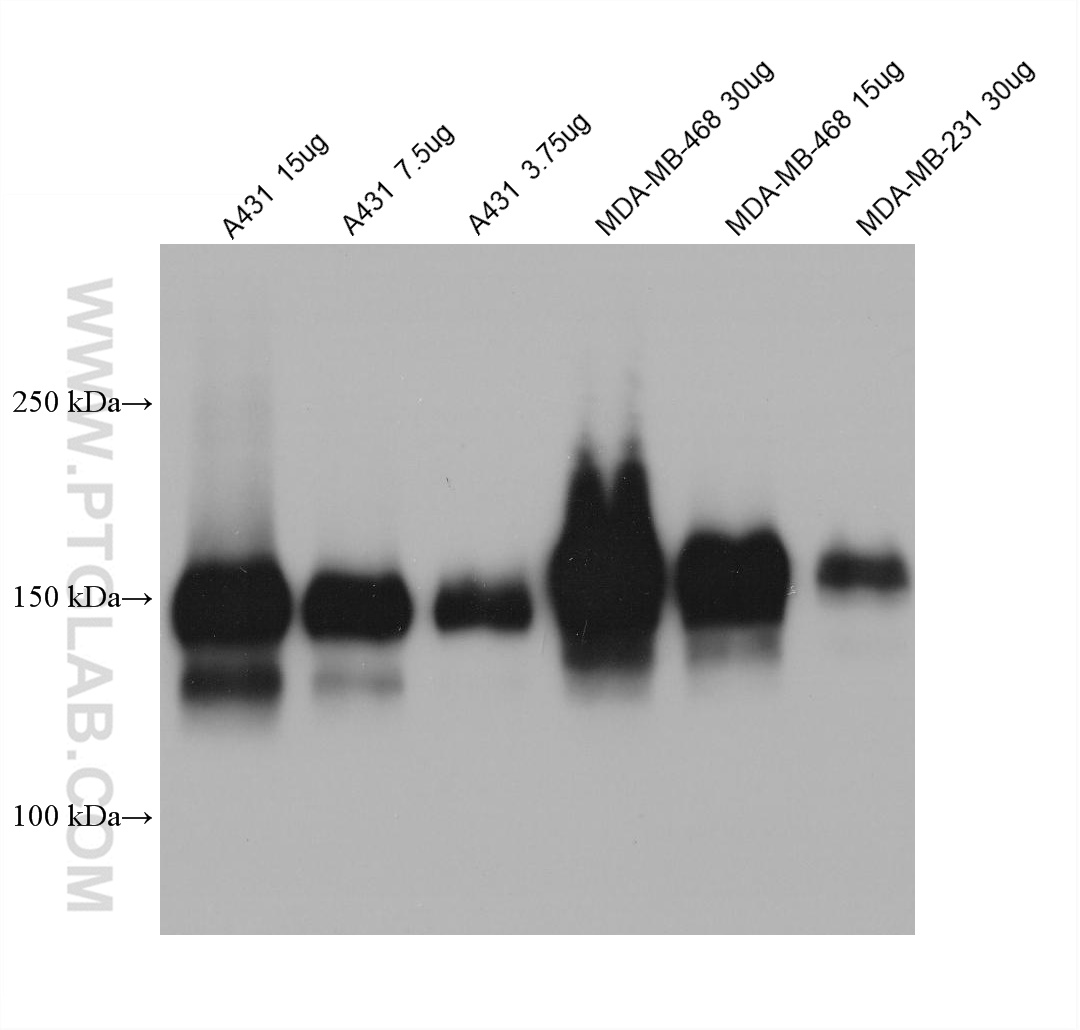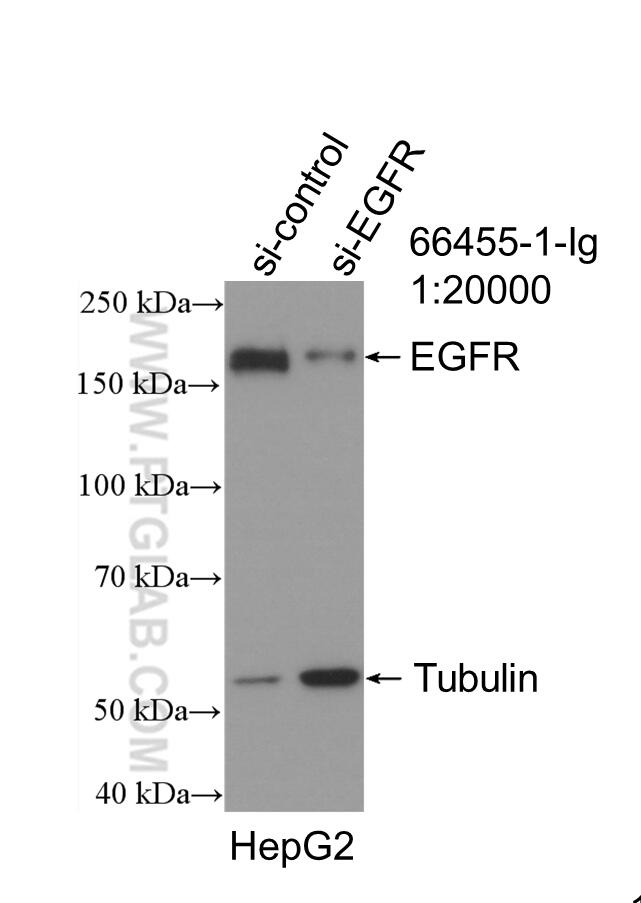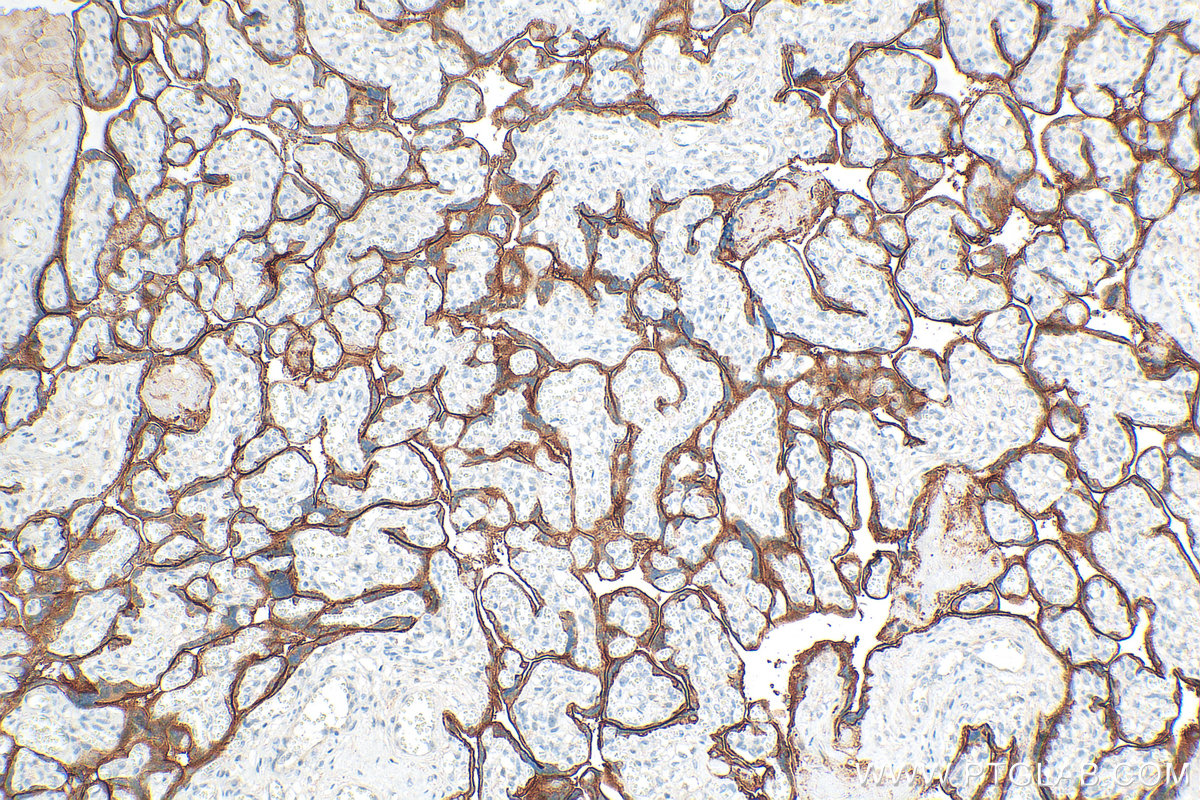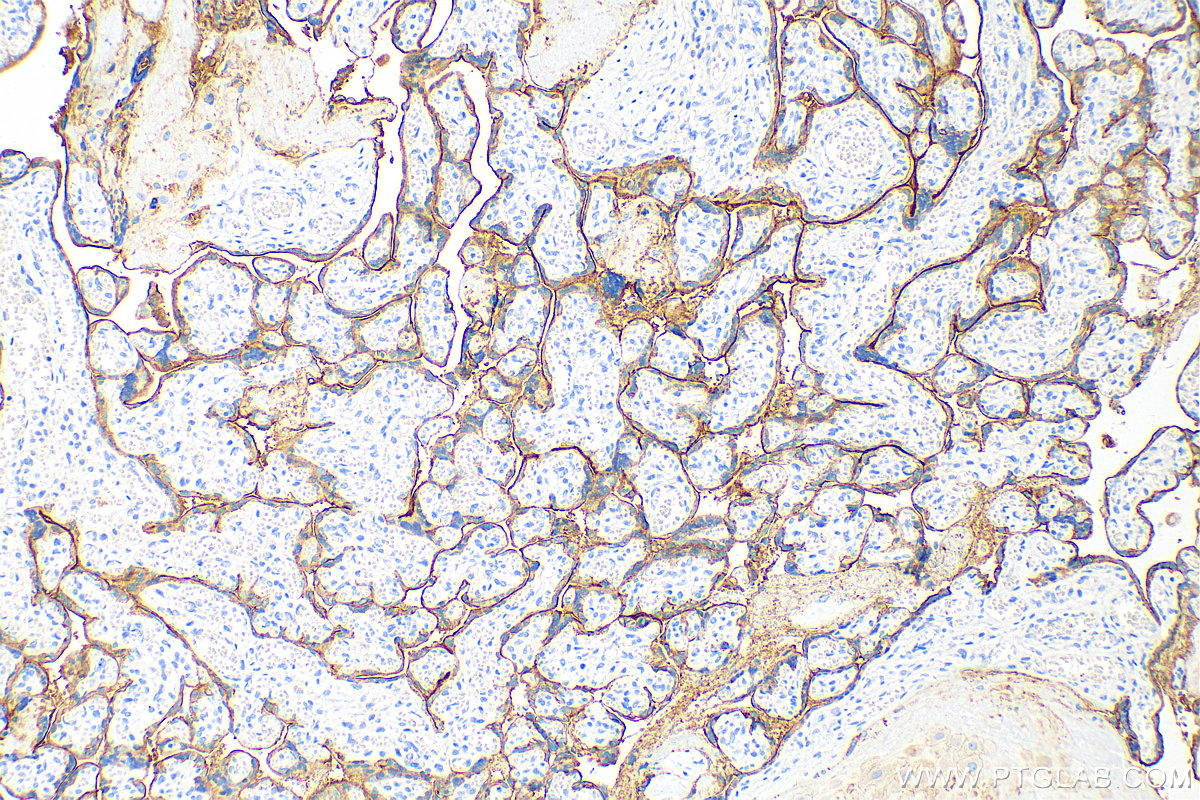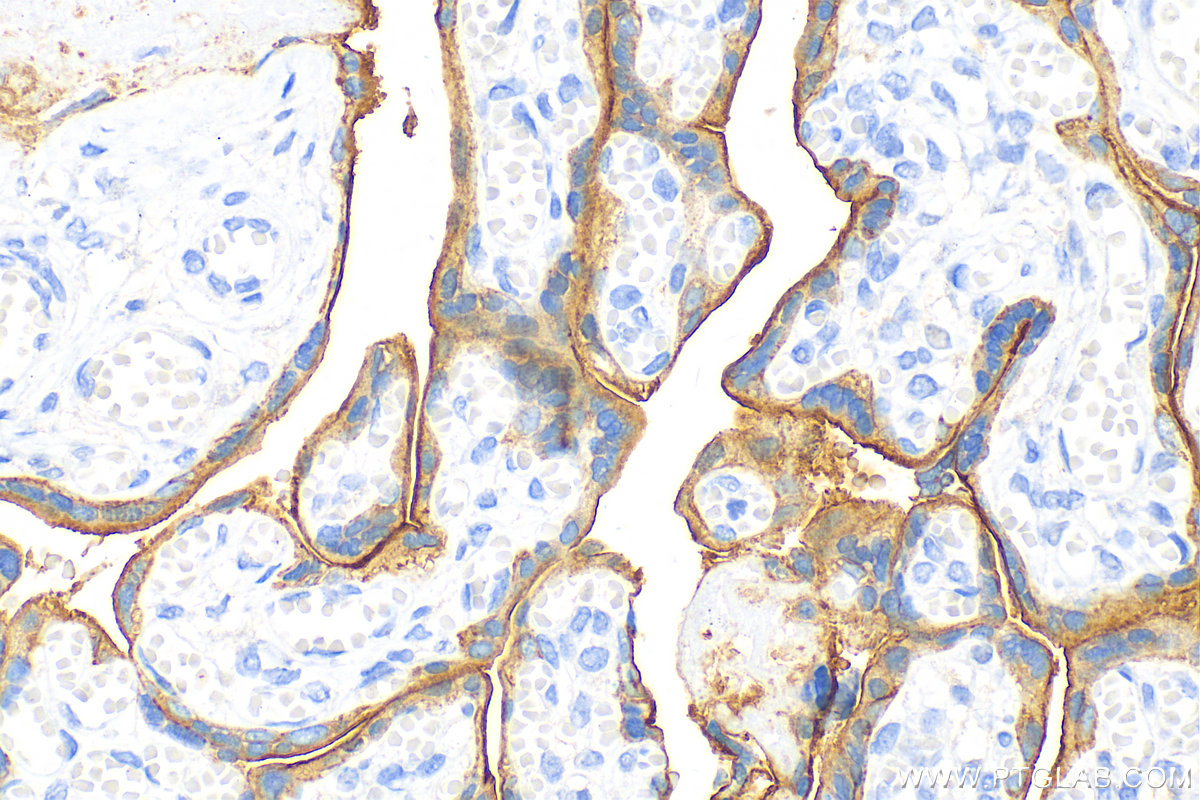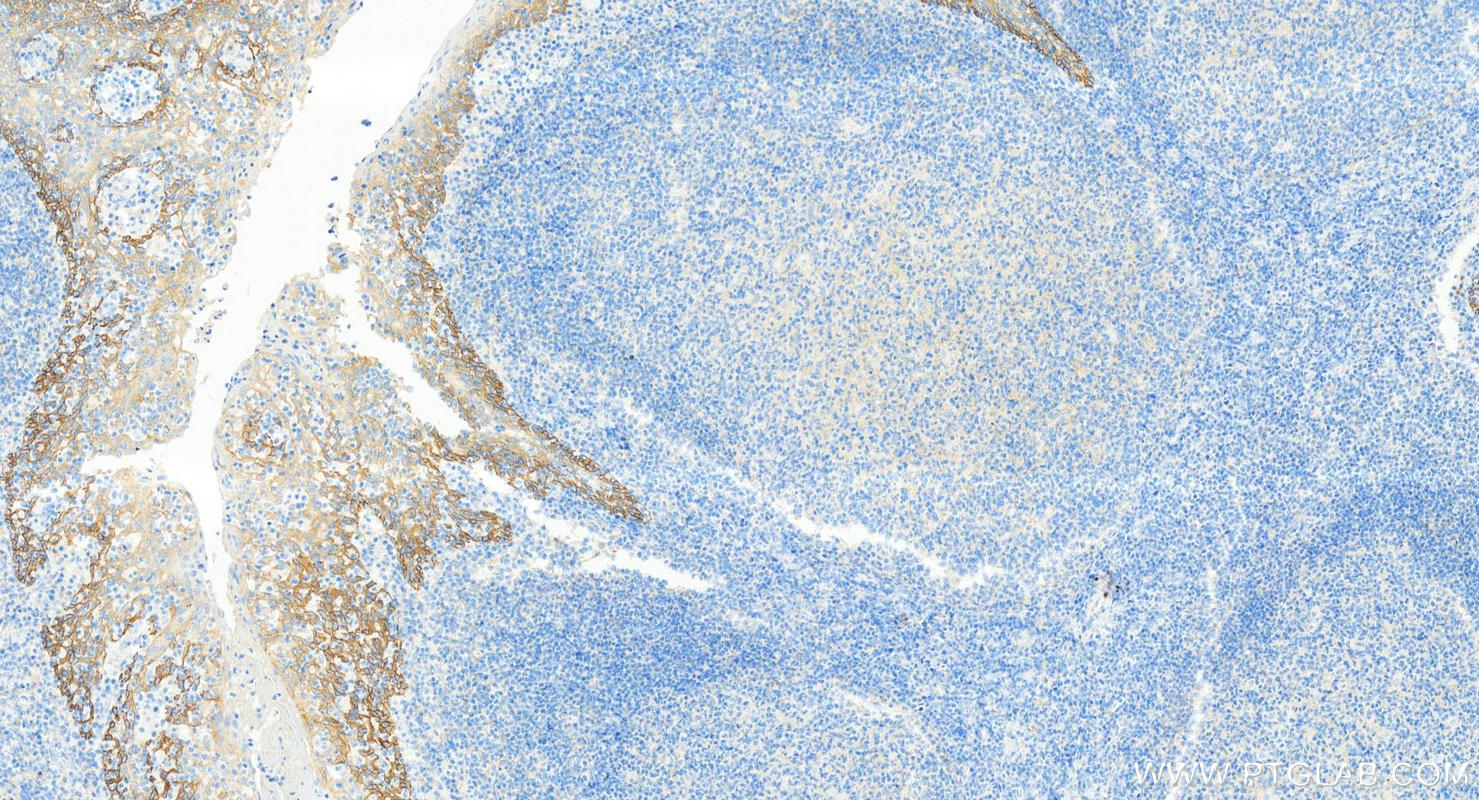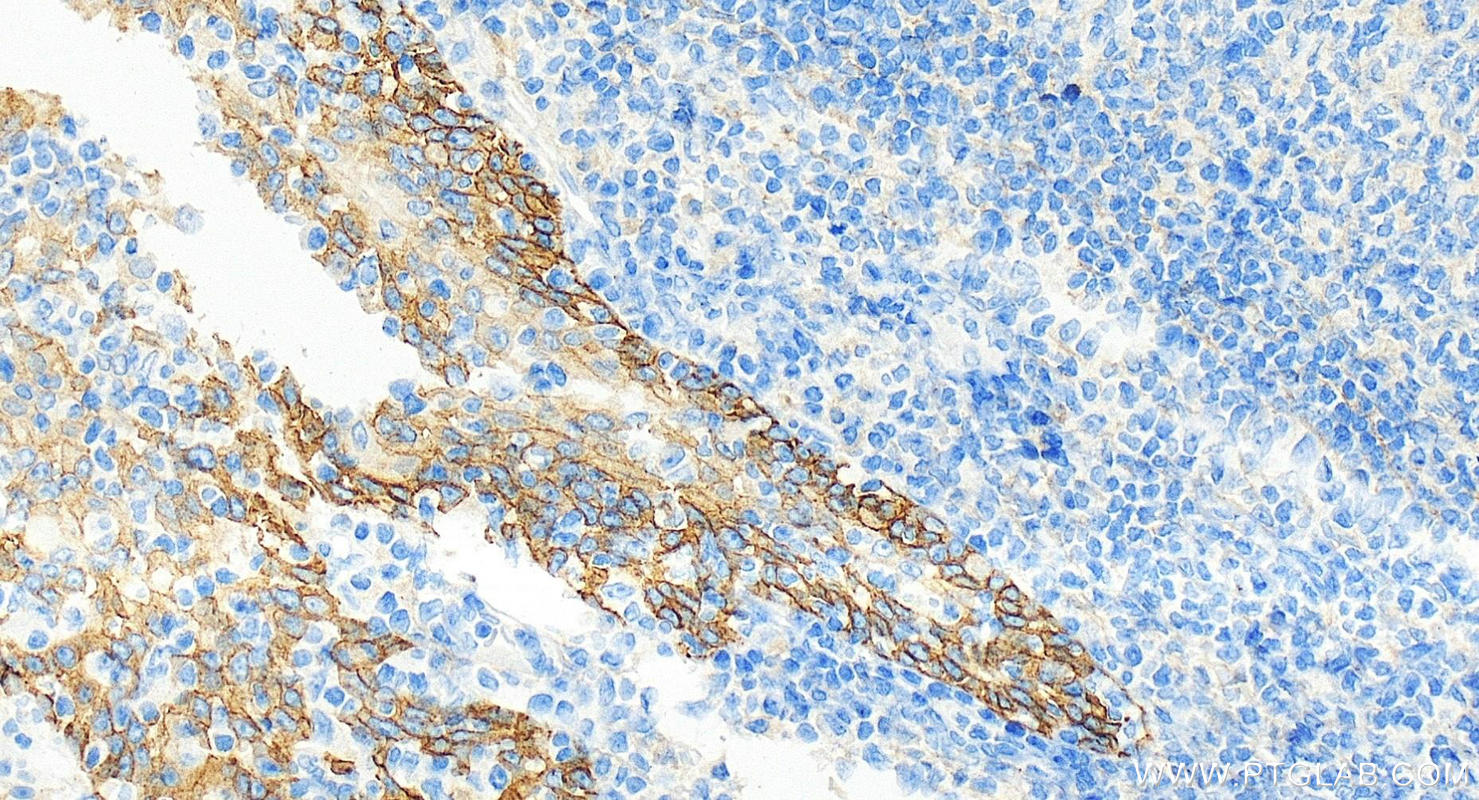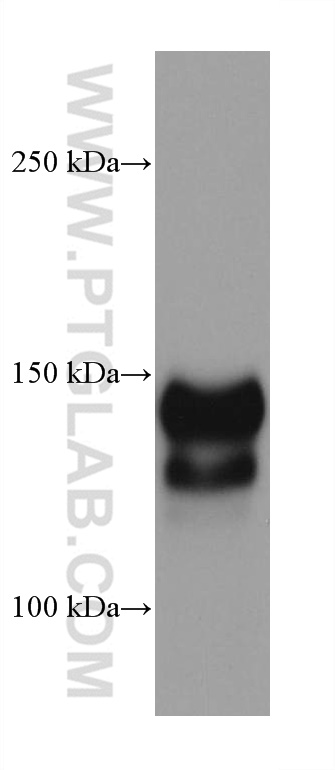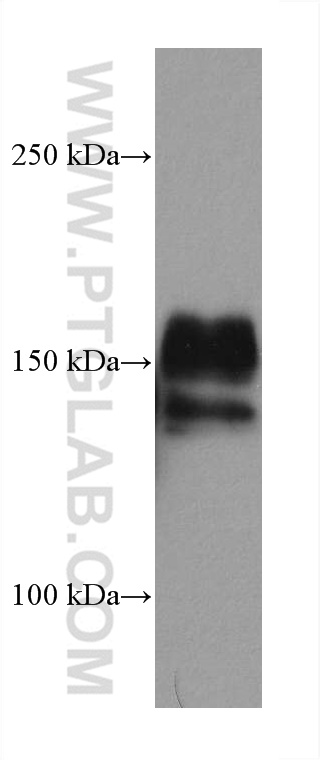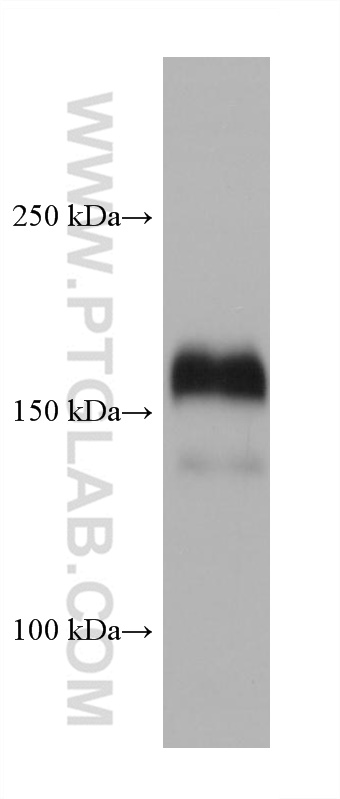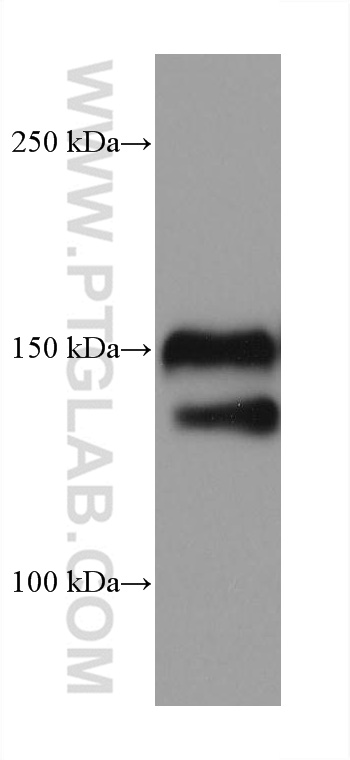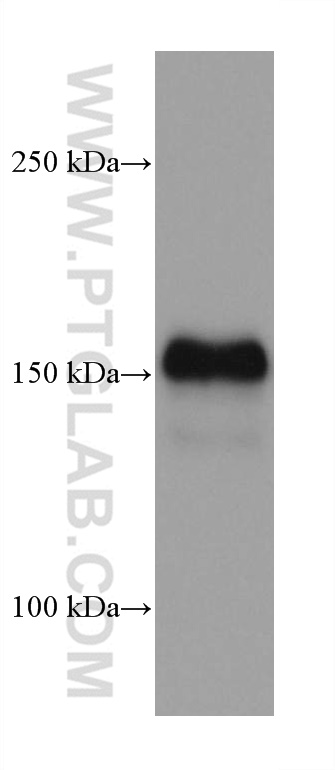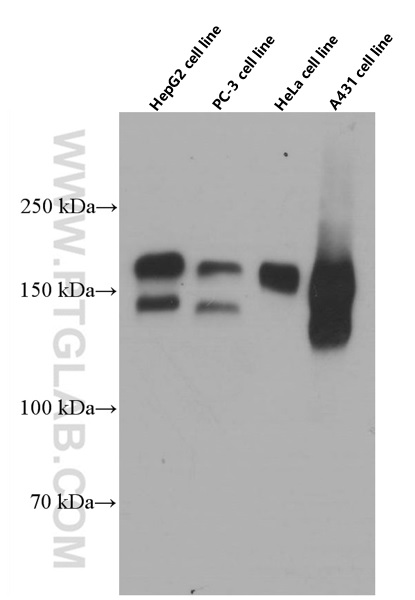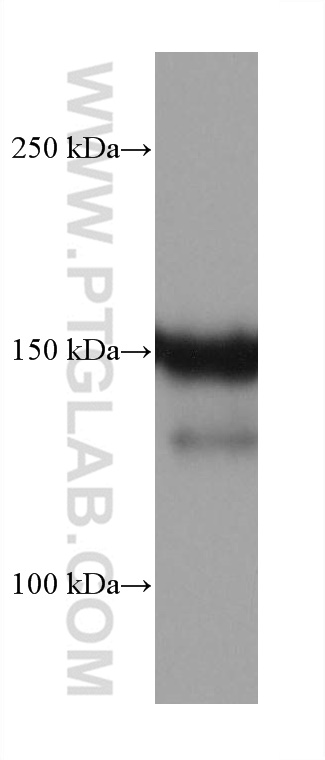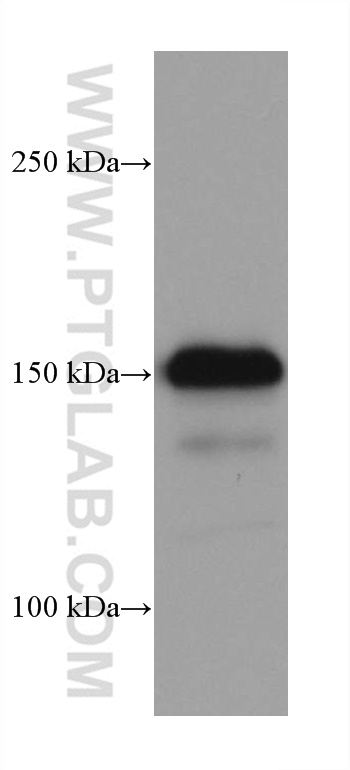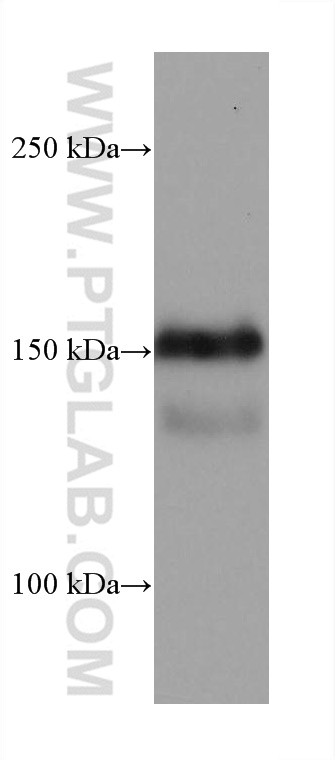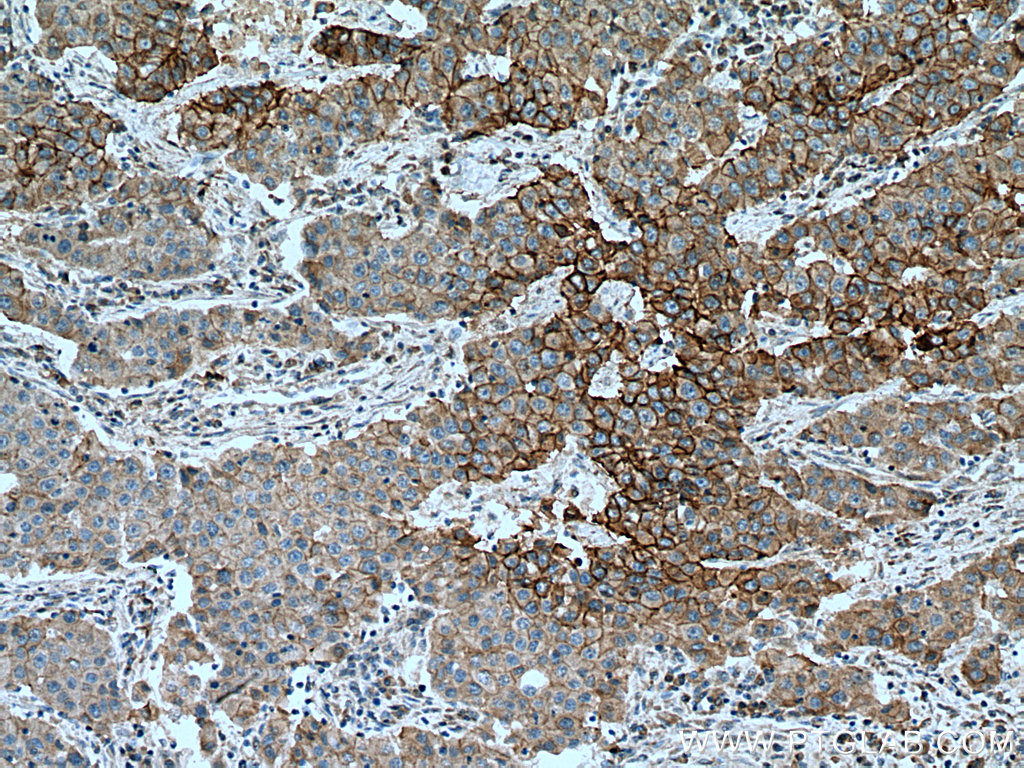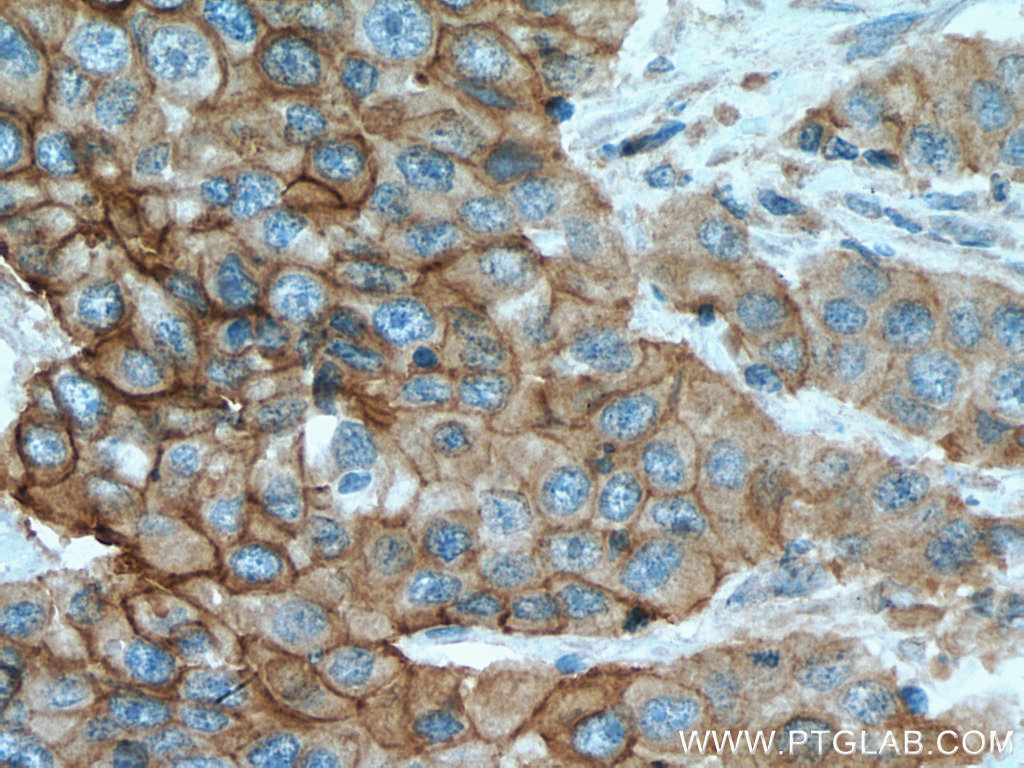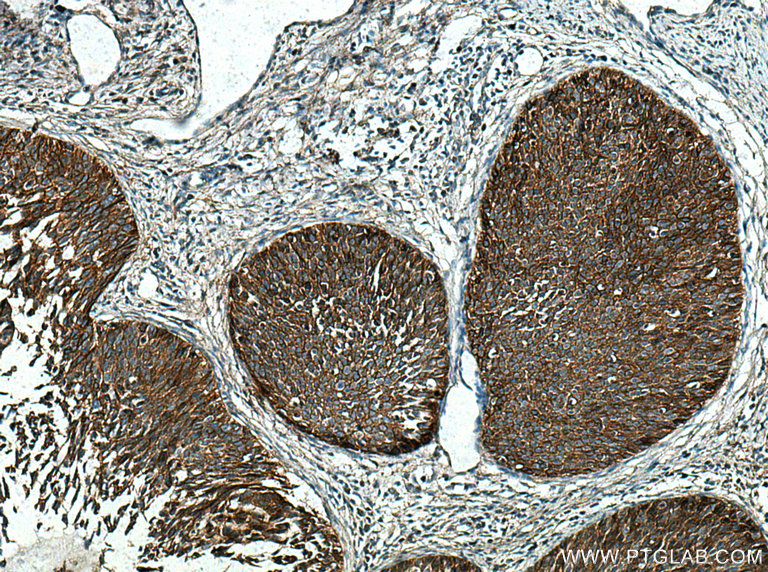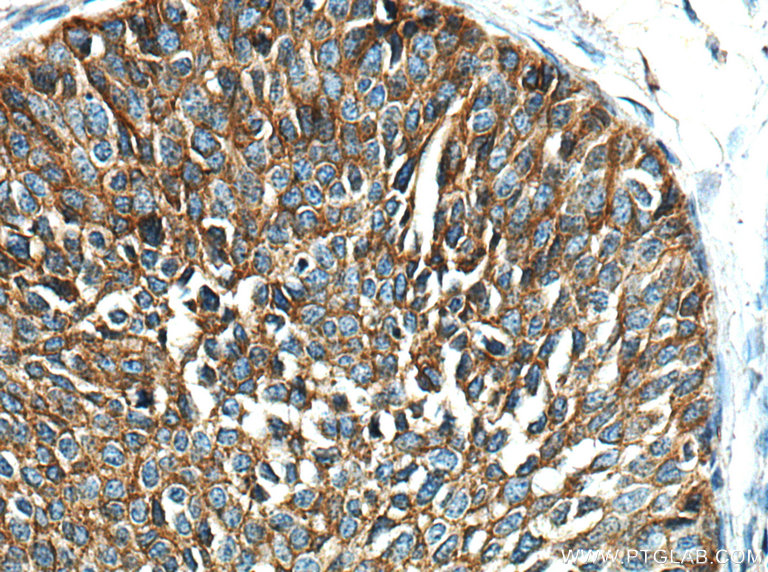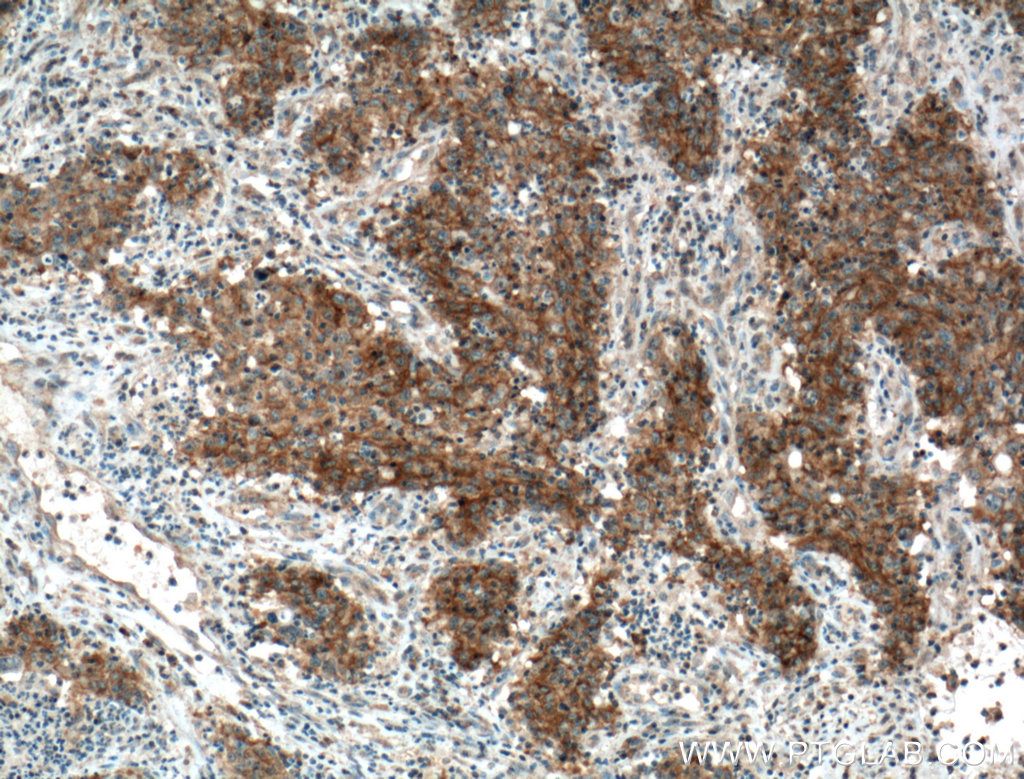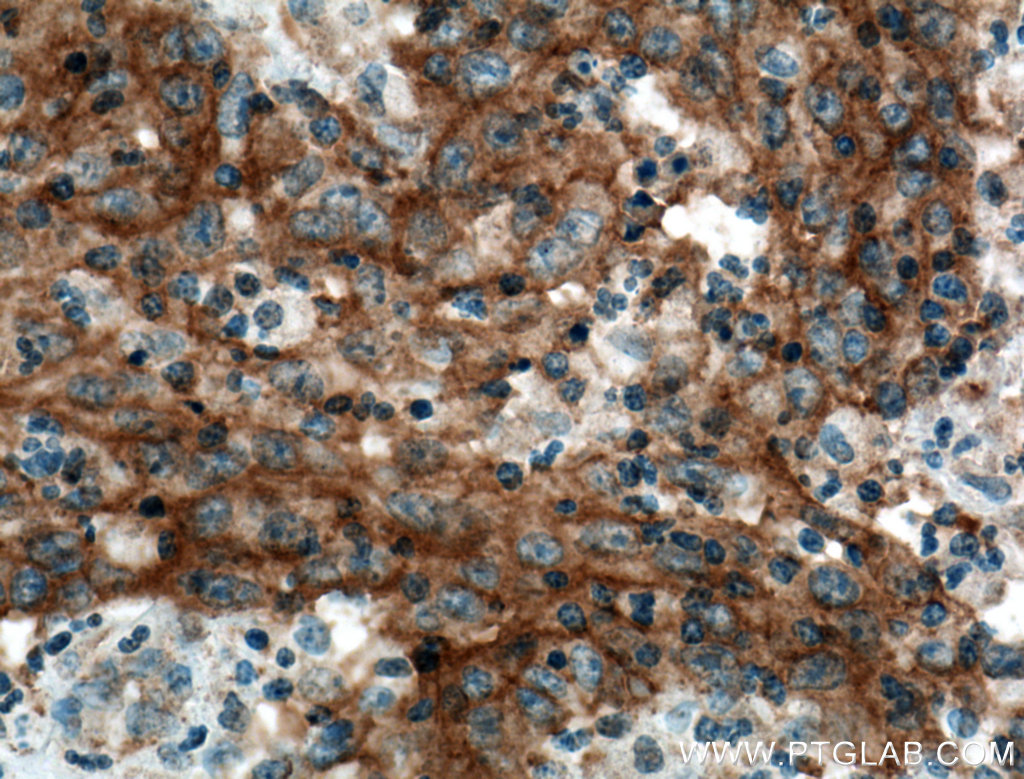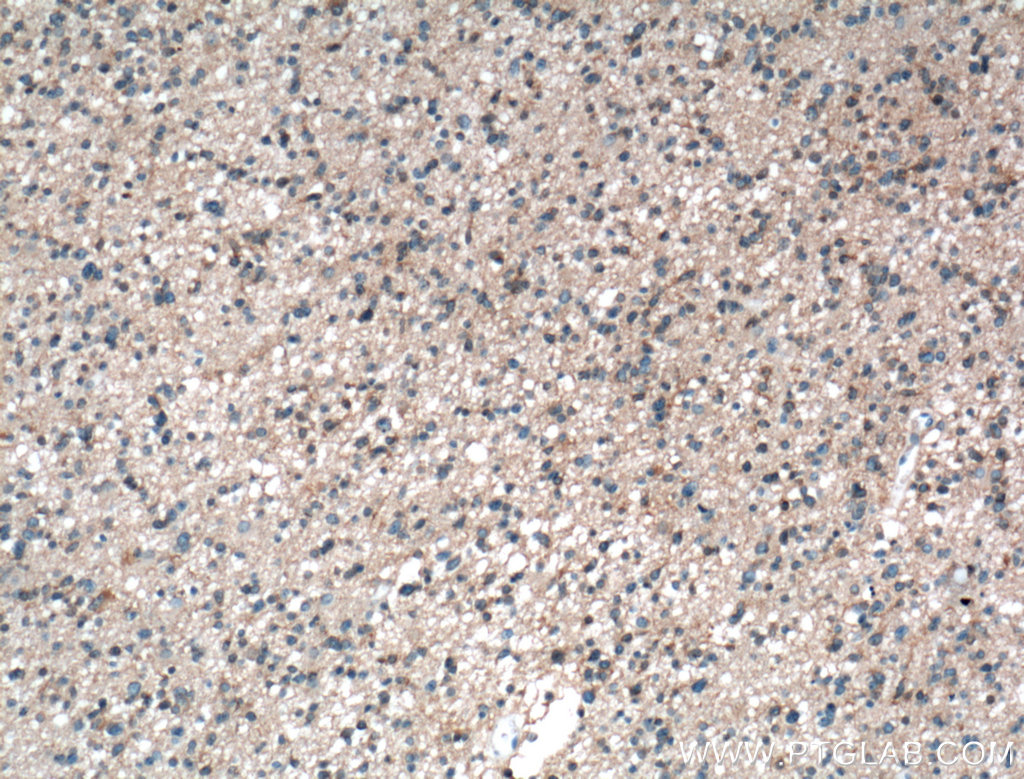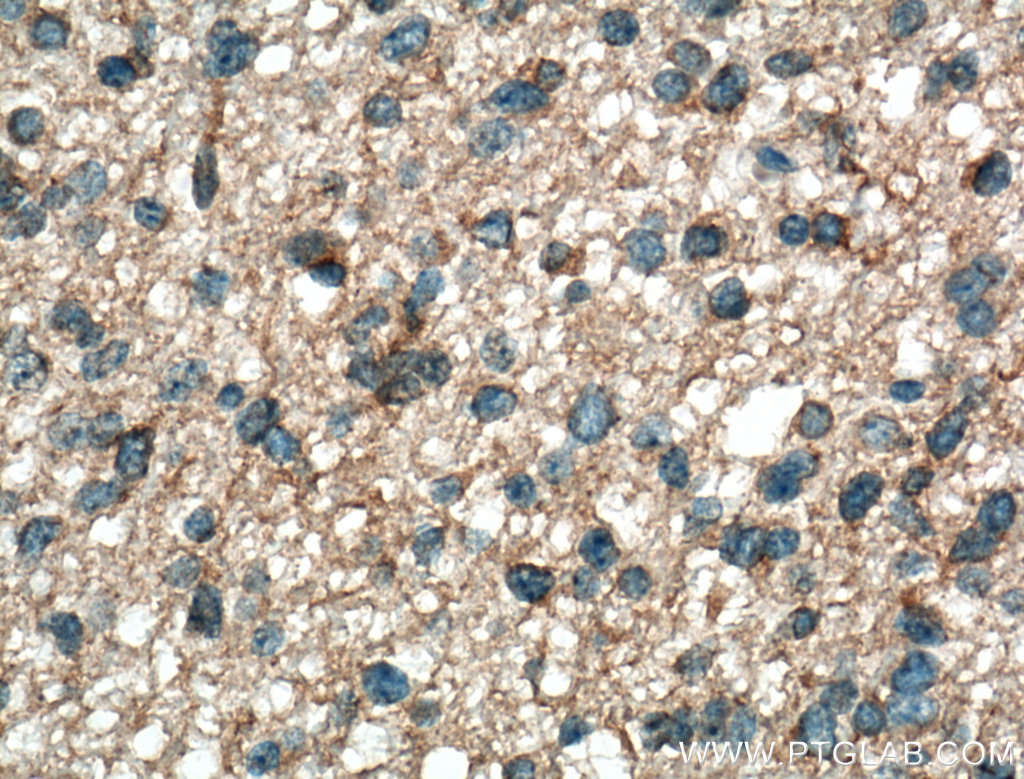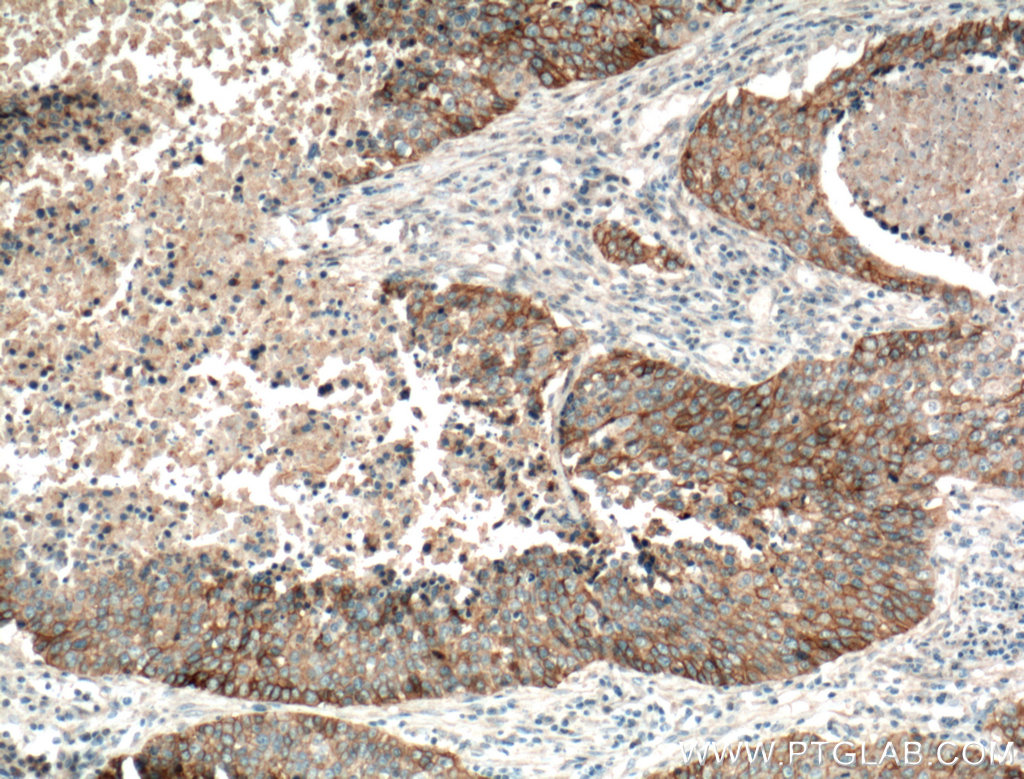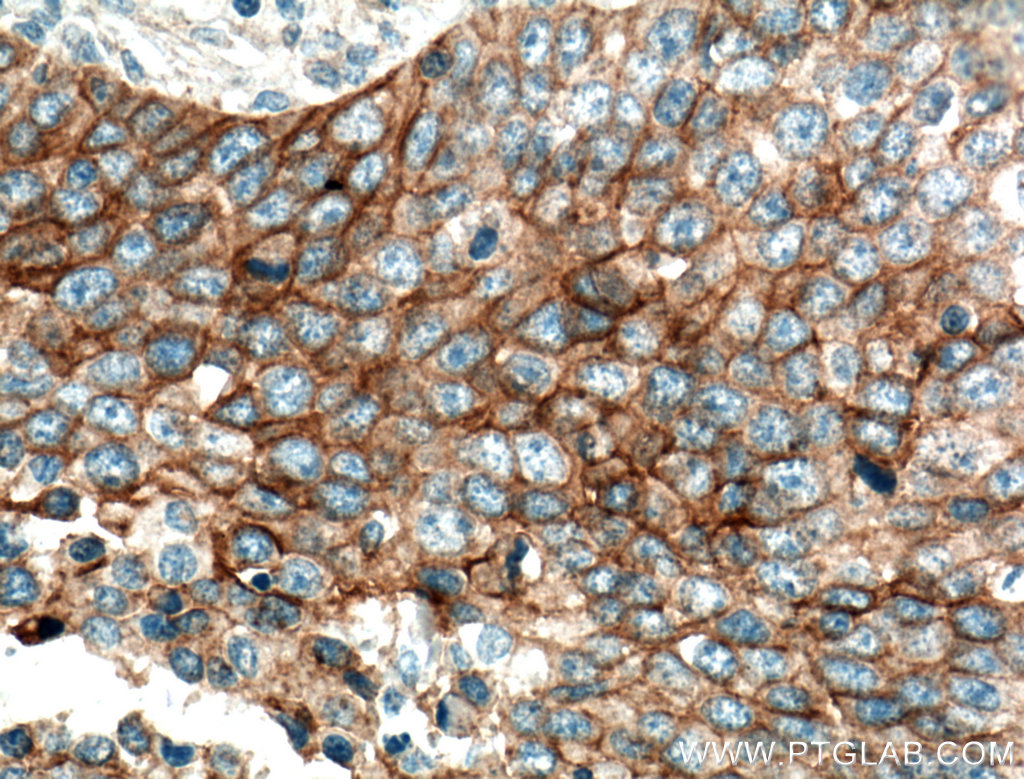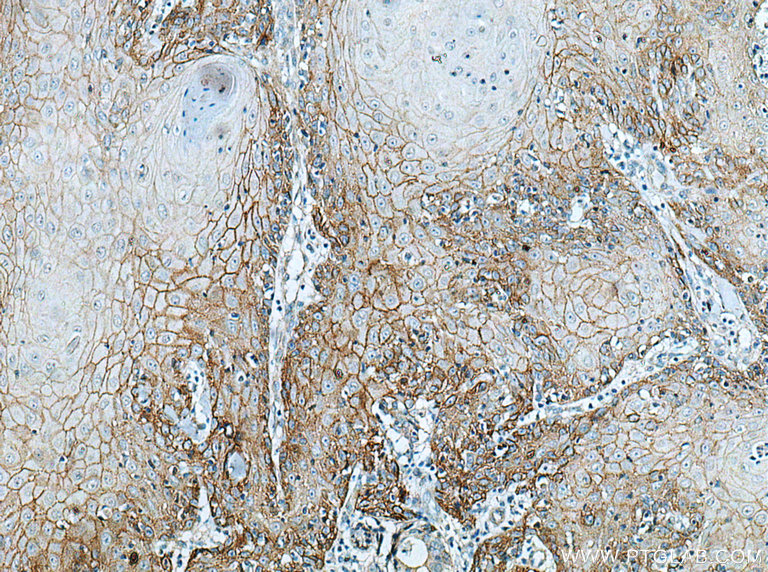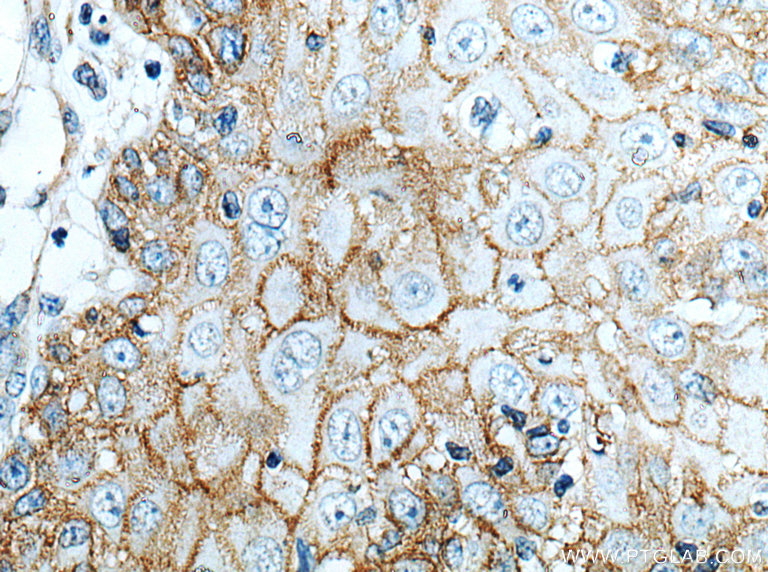WB Figures
WB analysis of A431 using 66455-1-Ig
A431 cells were subjected to SDS PAGE followed by western blot with 66455-1-Ig (EGFR antibody) at dilution of 1:9700 incubated at room temperature for 1.5 hours.
WB analysis using 66455-1-Ig
Various lysates were subjected to SDS PAGE followed by western blot with 66455-1-Ig (EGFR antibody) at dilution of 1:20000 incubated at room temperature for 1.5 hours.
WB analysis of A549 using 66455-1-Ig
A549 cells were subjected to SDS PAGE followed by western blot with 66455-1-Ig (EGFR antibody) at dilution of 1:9700 incubated at room temperature for 1.5 hours.
WB analysis of EC109 using 66455-1-Ig
EC109 cells were subjected to SDS PAGE followed by western blot with 66455-1-Ig (EGFR antibody) at dilution of 1:20000 incubated at room temperature for 1.5 hours.
WB analysis of HeLa using 66455-1-Ig
HeLa cells were subjected to SDS PAGE followed by western blot with 66455-1-Ig (EGFR antibody) at dilution of 1:9700 incubated at room temperature for 1.5 hours.
WB analysis of HepG2 using 66455-1-Ig
HepG2 cells were subjected to SDS PAGE followed by western blot with 66455-1-Ig (EGFR antibody) at dilution of 1:9700 incubated at room temperature for 1.5 hours.
WB analysis using 66455-1-Ig
Various lysates were subjected to SDS PAGE followed by western blot with 66455-1-Ig (EGFR antibody) at dilution of 1:20000 incubated at room temperature for 1.5 hours.
WB analysis of HepG2 using 66455-1-Ig
WB result of EGFR antibody (66455-1-Ig; 1:20000; incubated at room temperature for 1.5 hours) with sh-Control and sh-EGFR transfected HepG2 cells.
WB analysis of LNCaP using 66455-1-Ig
LNCaP cells were subjected to SDS PAGE followed by western blot with 66455-1-Ig (EGFR antibody) at dilution of 1:9700 incubated at room temperature for 1.5 hours.
WB analysis of PC-3 using 66455-1-Ig
PC-3 cells were subjected to SDS PAGE followed by western blot with 66455-1-Ig (EGFR antibody) at dilution of 1:9700 incubated at room temperature for 1.5 hours.
WB analysis of SKOV-3 using 66455-1-Ig
SKOV-3 cells were subjected to SDS PAGE followed by western blot with 66455-1-Ig (EGFR antibody) at dilution of 1:9700 incubated at room temperature for 1.5 hours.
IHC staining of human breast cancer using 66455-1-Ig
Immunohistochemical analysis of paraffin-embedded human breast cancer tissue slide using 66455-1-Ig (EGFR antibody) at dilution of 1:2000 (under 10x lens). Heat mediated antigen retrieval with Tris-EDTA buffer (pH 9.0).
IHC staining of human breast cancer using 66455-1-Ig
Immunohistochemical analysis of paraffin-embedded human breast cancer tissue slide using 66455-1-Ig (EGFR antibody) at dilution of 1:2000 (under 40x lens). Heat mediated antigen retrieval with Tris-EDTA buffer (pH 9.0).
IHC staining of human cervical cancer using 66455-1-Ig
Immunohistochemical analysis of paraffin-embedded human cervical cancer tissue slide using 66455-1-Ig (EGFR antibody) at dilution of 1:2000 (under 10x lens). Heat mediated antigen retrieval with Tris-EDTA buffer (pH 9.0).
IHC staining of human cervical cancer using 66455-1-Ig
Immunohistochemical analysis of paraffin-embedded human cervical cancer tissue slide using 66455-1-Ig (EGFR antibody) at dilution of 1:2000 (under 40x lens). Heat mediated antigen retrieval with Tris-EDTA buffer (pH 9.0).
IHC staining of human colon cancer using 66455-1-Ig
Immunohistochemical analysis of paraffin-embedded human colon cancer tissue slide using 66455-1-Ig (EGFR antibody) at dilution of 1:800 (under 10x lens. Heat mediated antigen retrieval with Tris-EDTA buffer (pH 9.0).
IHC staining of human colon cancer using 66455-1-Ig
Immunohistochemical analysis of paraffin-embedded human colon cancer tissue slide using 66455-1-Ig (EGFR antibody) at dilution of 1:800 (under 40x lens. Heat mediated antigen retrieval with Tris-EDTA buffer (pH 9.0).
IHC staining of human gliomas using 66455-1-Ig
Immunohistochemical analysis of paraffin-embedded human gliomas tissue slide using 66455-1-Ig (EGFR antibody) at dilution of 1:1000 (under 10x lens. Heat mediated antigen retrieval with Tris-EDTA buffer (pH 9.0).
IHC staining of human gliomas using 66455-1-Ig
Immunohistochemical analysis of paraffin-embedded human gliomas tissue slide using 66455-1-Ig (EGFR antibody) at dilution of 1:1000 (under 40x lens. Heat mediated antigen retrieval with Tris-EDTA buffer (pH 9.0).
IHC staining of human lung cancer using 66455-1-Ig
Immunohistochemical analysis of paraffin-embedded human lung cancer tissue slide using 66455-1-Ig (EGFR antibody) at dilution of 1:1000 (under 10x lens. Heat mediated antigen retrieval with Tris-EDTA buffer (pH 9.0).
IHC staining of human lung cancer using 66455-1-Ig
Immunohistochemical analysis of paraffin-embedded human lung cancer tissue slide using 66455-1-Ig (EGFR antibody) at dilution of 1:1000 (under 40x lens. Heat mediated antigen retrieval with Tris-EDTA buffer (pH 9.0).
IHC staining of human placenta using 66455-1-Ig
Immunohistochemical analysis of paraffin-embedded human placenta tissue slide using 66455-1-Ig (EGFR antibody) at dilution of 1:2000 (under 10x lens). Heat mediated antigen retrieval with Tris-EDTA buffer (pH 9.0).
IHC staining of human placenta using 66455-1-Ig
Immunohistochemical analysis of paraffin-embedded human placenta tissue slide using 66455-1-Ig (EGFR antibody) at dilution of 1:4000 (under 10x lens). Heat mediated antigen retrieval with Tris-EDTA buffer (pH 9.0).
IHC staining of human placenta using 66455-1-Ig
Immunohistochemical analysis of paraffin-embedded human placenta tissue slide using 66455-1-Ig (EGFR antibody) at dilution of 1:4000 (under 40x lens). Heat mediated antigen retrieval with Tris-EDTA buffer (pH 9.0).
IHC staining of human skin cancer using 66455-1-Ig
Immunohistochemical analysis of paraffin-embedded human skin cancer tissue slide using 66455-1-Ig (EGFR antibody) at dilution of 1:2000 (under 10x lens). Heat mediated antigen retrieval with Tris-EDTA buffer (pH 9.0).
IHC staining of human skin cancer using 66455-1-Ig
Immunohistochemical analysis of paraffin-embedded human skin cancer tissue slide using 66455-1-Ig (EGFR antibody) at dilution of 1:2000 (under 40x lens). Heat mediated antigen retrieval with Tris-EDTA buffer (pH 9.0).
IHC staining of human tonsillitis using 66455-1-Ig
Immunohistochemical analysis of paraffin-embedded human tonsillitis tissue slide using 66455-1-Ig (EGFR antibody) at dilution of 1:4000 (under 20x lens). Heat mediated antigen retrieval with Tris-EDTA buffer (pH 9.0).
IHC staining of human tonsillitis using 66455-1-Ig
Immunohistochemical analysis of paraffin-embedded human tonsillitis tissue slide using 66455-1-Ig (EGFR antibody) at dilution of 1:4000 (under 20x lens). Heat mediated antigen retrieval with Tris-EDTA buffer (pH 9.0).
